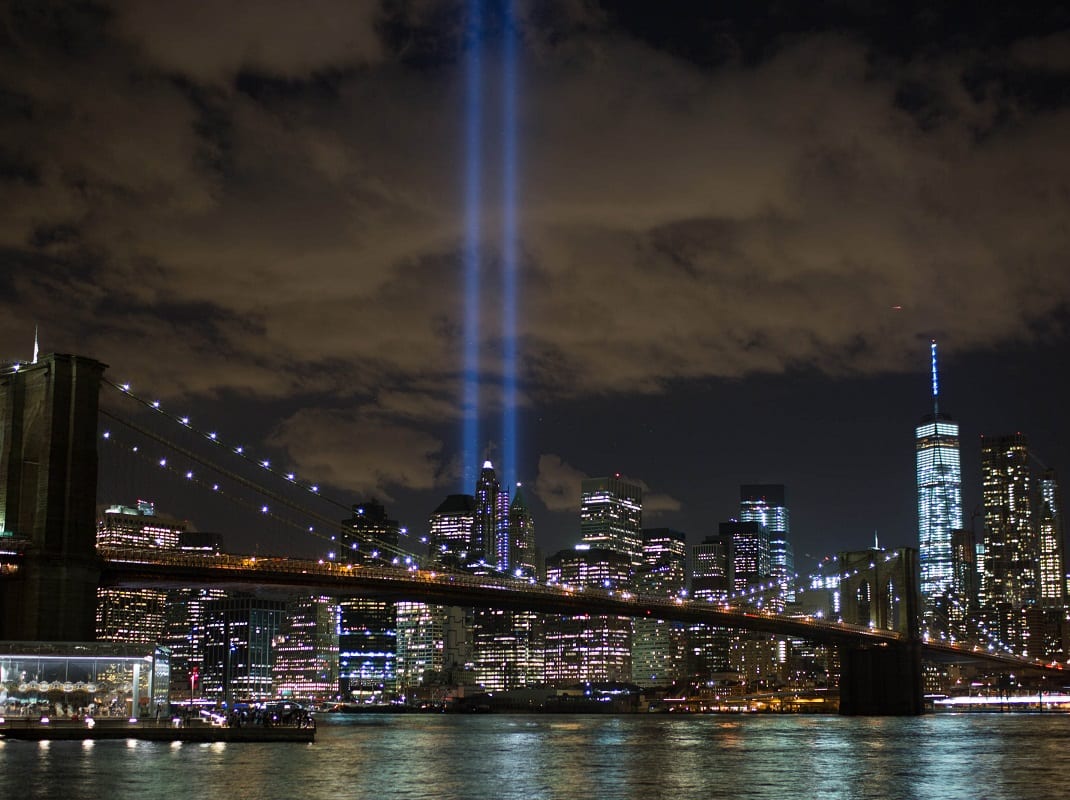While NASCAR officials and the France family agreed that the right decision was not to race on the weekend following the World Trade Center tragedy, there were those who were upset with the call and wanted to race.
One of those was Jeff Burton, who was driving for Jack Roush at the time and was getting ready to go to the track (New Hampshire Motor Speedway) where he had led all 300 laps the previous year.
“I was pissed. I wanted revenge right then and there (for what had happened),” Burton recalled. “And then I wanted us to race. I didn’t want them to cancel the [New Hampshire] race. I wanted to show the world that they couldn’t keep us from doing what we were going to do, although I did understand why people didn’t want to race.”
While there was no racing on Sept. 16, 2001, NASCAR returned to action on Sept. 23 at Dover (Del.) Int’l Speedway.
Multiple patriotic tributes took place during pre-race ceremonies and many drivers sported American-inspired paint schemes, most notably Ken Schrader, who removed every decal from his car and had it completely wrapped with an American Flag graphic.
It was a show of support for the American people and a sign from NASCAR that they stood beside their countrymen in the fight for freedom and display of patriotism. It was also a weekend that, Brian France adds, uplifted those who played a role in it.
“When we went back to racing the following week at Dover, there was a real sense of appreciation leading up to the event,” France said. “We felt proud to have the opportunity to participate in our sport and I really believe the industry came together. We were all one voice in paying tribute to the victims and we celebrated our freedom of being Americans.”
Burton felt it on pit road as well, as many of those on the grid did that day.
“It was an inspiring weekend [when racing returned at Dover] — the flyover, the National Anthem, the fans, the (chants of) “U-S-A”,” Burton explained. “Everything about that afternoon was just very special.”

And ultimately, on a day when NASCAR and the American country needed healing, it happened — for the second time in 2001 courtesy of Dale Earnhardt Jr.
Earnhardt, who started on the pole and dominated much of the event, fell back in the field after a slow pit stop and had to rally back, catching a late caution and ultimately taking the lead from Dale Jarrett with 39 laps to go before going on to win his second of three Cup races that season.
Earnhardt also won the July Daytona Int’l Speedway event, the first race at Daytona following his father’s death and another win that allowed healing for the masses through the sport he was so passionate about.
He says now he doesn’t remember a lot of what happened that day in Delaware — only the parts that mattered.
“I don’t remember hardly a thing about that race,” Earnhardt said in a 2011 interview with ESPN, forgetting that he led 193 of the 400 laps that afternoon. “I remember that amazing prerace show and then I remember the celebration after we won. It wasn’t about me at that point. It was about celebrating America. And it was about feeling normal again.”
“I remember thinking, OK, we’re back at the track now. We’re all happy again, even if it was just for a few hours. Maybe now it’s OK to smile again. To feel normal again.”
To continue reading, advance to the next page.
